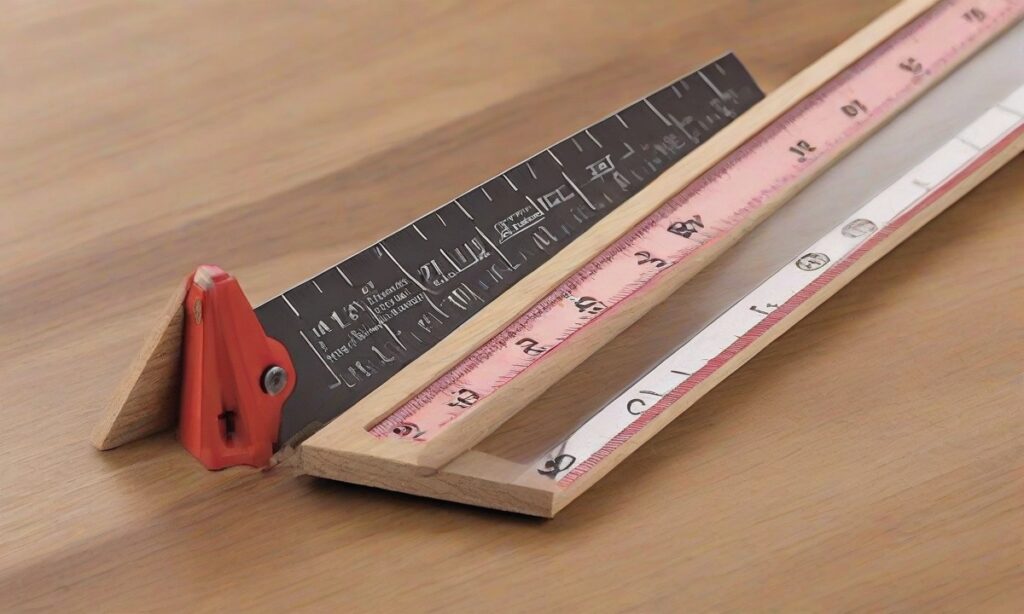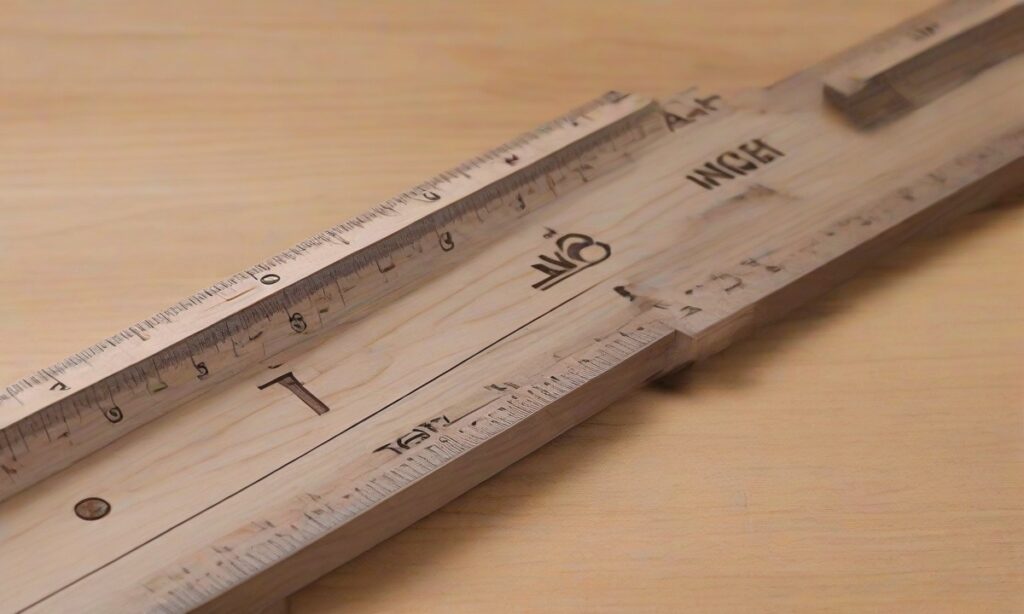Carpenter Angle Ruler: Precision Tool for Pros
2023.12.17 / By admin

If you are a professional carpenter or a woodworking enthusiast, you understand the importance of precision in your craft. The carpentry ruler you choose can make or break the accuracy and quality of your final product. This is why experts swear by the carpenter angle ruler. This tool is a game-changer for measuring angles with utmost precision and accuracy.
In this article, we will explore the features and functions of the carpenter angle ruler. We will examine its importance in the woodworking industry, and how it contributes to achieving professional results. Additionally, we will provide practical tips and techniques for selecting the best angle measurement tool for your needs, thus taking your woodworking skills to the next level.
Whether you are a seasoned professional or an entry-level hobbyist, the carpenter angle ruler is a must-have tool in your arsenal of woodworking equipment, carpentry ruler, and carpenter tools. So, let’s dive right in and explore why this tool is so essential in measuring angles with precision.
Understanding the Carpenter Angle Ruler
For woodworking professionals, the carpenter angle ruler is an essential tool for measuring angles with precision. The tool has a simple yet effective design, consisting of two arms that pivot at a central fulcrum. One arm acts as a stationary baseline, while the other arm moves to adjust the angle.
Carpenter angle rulers come in various types and sizes, including digital versions that feature advanced technology. However, the basic design remains the same, offering reliable accuracy for measuring angles in woodworking projects.
One of the great advantages of this tool is its compatibility with other woodworking tools. It can work seamlessly with saws, drills, and other equipment, ensuring consistent and accurate angles throughout the project.
By using a carpenter angle ruler, you can avoid errors that can result from guessing or approximating angles. It also saves time and money, as it ensures that the woodworking project’s overall precision is maintained.
Why Precision Matters in Woodworking
When it comes to woodworking, precision is everything. Accurate angle measurements are crucial for not only ensuring the integrity and safety of your final product but also for achieving its desired aesthetic appeal.
Without precise measurements, cutting angles can result in uneven or rough edges, misaligned joints, and an overall unprofessional appearance. That’s where precision measuring tools, such as a carpenter angle ruler, come in handy.
A carpenter angle ruler allows you to measure angles accurately, ensuring that your final product is not only safe but also smoothly finished. This tool is a must-have for any professional woodworker or aspiring DIY enthusiast.
Choosing the Right Carpenter Angle Ruler

When selecting an angle measurement tool, there are a few crucial factors to consider. Firstly, think about the type of work you will be doing, including the thickness and size of the materials you will be working with. This will influence the ruler’s size, length, and durability requirements.
You should also consider the angles you will be measuring, as some angle rulers are designed to measure a particular range or type of angle. For example, a protractor is a versatile tool that can measure angles up to 180 degrees, while a bevel gauge is ideal for measuring and transferring angles with precision.
The material of the ruler should also be a consideration. Stainless steel is a popular material for carpentry rulers due to its strength, durability, and rust-resistance. However, other materials like aluminum or plastic may better suit your needs.
Aside from the angle ruler, there are other woodworking equipment and carpentry tools that complement it. These include a framing square, a combination square, or a speed square. These tools help you achieve accuracy and precision in your measurements and cuts.
Summary
- Consider the type of work you will be doing and the size and thickness of materials you will be working with.
- Select the ruler that best suits the type of angles you will be measuring
- Choose the right material – stainless steel, aluminum, or plastic.
- Complement the angle ruler with additional tools like a framing square, a combination square, or a speed square.
Mastering Angle Measurement Techniques
Using a carpenter angle ruler may seem straightforward, but it requires skill and attention to detail to get the most accurate results. Here are some techniques to help you master angle measurement:
Proper Measurement Techniques
- Always begin by ensuring that your work surface is flat and level. Place your angle ruler on the surface and adjust it to 0 degrees.
- When measuring angles, hold your ruler firmly against the surface and keep it steady. Use your free hand to adjust the angle until it aligns correctly with the measurement markings on the ruler.
- For precise measurements, use a magnifying glass or a digital protractor to read the markings on the ruler.
Common Mistakes to Avoid
- Avoid placing your ruler on an uneven or unstable surface, as this can affect the accuracy of your measurements.
- Do not apply too much pressure when holding the ruler, as this can cause it to bend or warp, resulting in inaccurate measurements.
- Be careful not to confuse degrees with minutes or seconds when measuring angles. Take your time and double-check your readings to avoid mistakes.
Troubleshooting
- If your carpenter angle ruler is not providing accurate readings, check to see if it is dirty or greasy. Clean it with a damp cloth and dry it thoroughly.
- Make sure that your ruler is not bent or warped. If it is, replace it immediately to avoid compromising the accuracy of your measurements.
- If you are still having trouble, consider investing in a high-quality digital angle finder or seek guidance from a professional carpenter.
By mastering these angle measurement techniques, you can ensure that your woodworking projects are precise and professional. Remember to use your carpenter angle ruler in conjunction with other woodworking tools such as a miter saw or table saw for even more accurate results.
FAQ
What is a carpenter angle ruler?
A carpenter angle ruler is a precision measuring tool used in woodworking and construction projects to accurately measure angles. It consists of a ruler with an adjustable arm or protractor that allows carpenters to determine precise angles for cutting and shaping materials.
Why is a carpenter angle ruler important?
A carpenter angle ruler is essential for professionals in the carpentry and construction industry because it ensures precision and accuracy in angle measurements. By using this tool, carpenters can achieve precise cuts, accurate joinery, and perfectly aligned joints, resulting in high-quality, professional-grade woodworking projects.
How do I use a carpenter angle ruler?
To use a carpenter angle ruler, simply place the ruler against the surface you want to measure the angle of and adjust the arm or protractor to align with the angle you need. Once the ruler is securely positioned, you can read the angle measurement indicated by the markings on the ruler. Ensure you hold the ruler firmly in place to avoid any movement while taking measurements.
Are there different types of carpenter angle rulers?
Yes, there are different types of carpenter angle rulers available, including protractor-style rulers, combination squares with angle measurement capabilities, and digital angle finders. Each type has its own advantages and may be suitable for different woodworking tasks. Consider the specific requirements of your project when choosing the right type of carpenter angle ruler.
Can a carpenter angle ruler be used with other woodworking tools?
Absolutely! A carpenter angle ruler is designed to complement other woodworking tools and equipment, such as saws, routers, and chisels. By using a carpenter angle ruler in conjunction with these tools, you can ensure precise and accurate cuts, angles, and joints, resulting in well-finished, professional-level woodworking projects.
